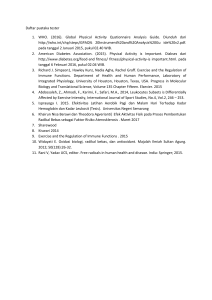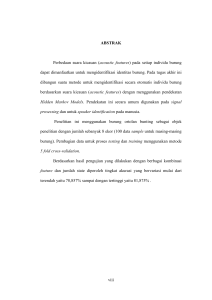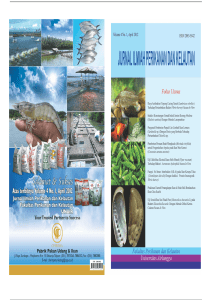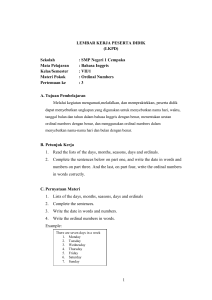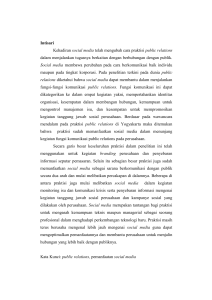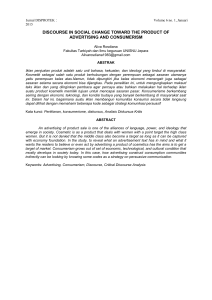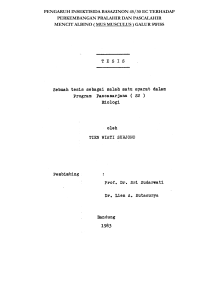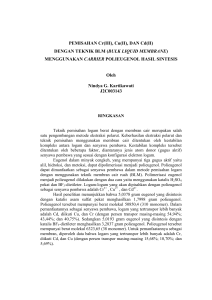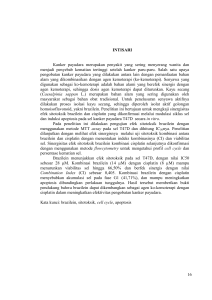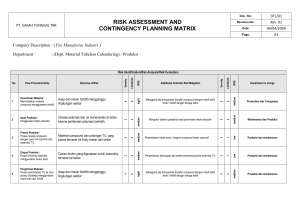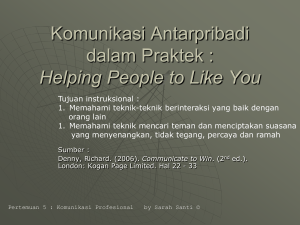Model Matematika Interaksi Makrofag, Limfosit T dan Sitokin pada
advertisement
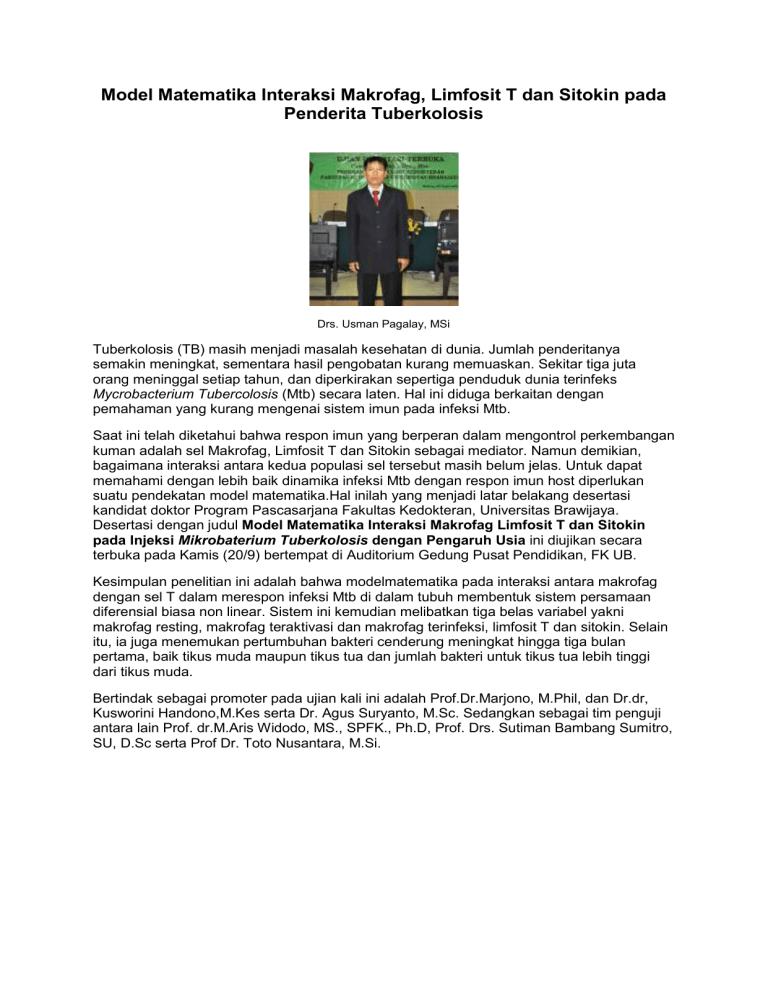
Model Matematika Interaksi Makrofag, Limfosit T dan Sitokin pada Penderita Tuberkolosis Drs. Usman Pagalay, MSi Tuberkolosis (TB) masih menjadi masalah kesehatan di dunia. Jumlah penderitanya semakin meningkat, sementara hasil pengobatan kurang memuaskan. Sekitar tiga juta orang meninggal setiap tahun, dan diperkirakan sepertiga penduduk dunia terinfeks Mycrobacterium Tubercolosis (Mtb) secara laten. Hal ini diduga berkaitan dengan pemahaman yang kurang mengenai sistem imun pada infeksi Mtb. Saat ini telah diketahui bahwa respon imun yang berperan dalam mengontrol perkembangan kuman adalah sel Makrofag, Limfosit T dan Sitokin sebagai mediator. Namun demikian, bagaimana interaksi antara kedua populasi sel tersebut masih belum jelas. Untuk dapat memahami dengan lebih baik dinamika infeksi Mtb dengan respon imun host diperlukan suatu pendekatan model matematika.Hal inilah yang menjadi latar belakang desertasi kandidat doktor Program Pascasarjana Fakultas Kedokteran, Universitas Brawijaya. Desertasi dengan judul Model Matematika Interaksi Makrofag Limfosit T dan Sitokin pada Injeksi Mikrobaterium Tuberkolosis dengan Pengaruh Usia ini diujikan secara terbuka pada Kamis (20/9) bertempat di Auditorium Gedung Pusat Pendidikan, FK UB. Kesimpulan penelitian ini adalah bahwa modelmatematika pada interaksi antara makrofag dengan sel T dalam merespon infeksi Mtb di dalam tubuh membentuk sistem persamaan diferensial biasa non linear. Sistem ini kemudian melibatkan tiga belas variabel yakni makrofag resting, makrofag teraktivasi dan makrofag terinfeksi, limfosit T dan sitokin. Selain itu, ia juga menemukan pertumbuhan bakteri cenderung meningkat hingga tiga bulan pertama, baik tikus muda maupun tikus tua dan jumlah bakteri untuk tikus tua lebih tinggi dari tikus muda. Bertindak sebagai promoter pada ujian kali ini adalah Prof.Dr.Marjono, M.Phil, dan Dr.dr, Kusworini Handono,M.Kes serta Dr. Agus Suryanto, M.Sc. Sedangkan sebagai tim penguji antara lain Prof. dr.M.Aris Widodo, MS., SPFK., Ph.D, Prof. Drs. Sutiman Bambang Sumitro, SU, D.Sc serta Prof Dr. Toto Nusantara, M.Si. Macrophage Interaction Mathematic Model, T Lymphocytes and Sytokines on Tuberculosis Patients Drs. Usman Pagalay, M.Si. Tuberculosis still becomes a health problem in the world. The number of patients are increased, meanwhile the result of medication is less then satisfactory. About three million people are pass away each year, and it is predicted that one-third of world population are infected with Mycobacterium tuberculosis (MTB) latently. It is suspected that it is related to the lack of understanding about immune system on MTB infection. Currently, it has been known that the immune response which has a role to control the development of germs are Macrophage cells, T Lymphocytes and Sytokines as the mediator. However, how is the interaction between both cell populations is still unclear. To be able to understand clearly on the dymanic of MTB infection with the response of host immune needs an approach of mathematic model. It becomes the dissertation background of the candidate of doctor for Post-graduate Program of Medical Faculty Universitas Brawijaya. The dissertation titled “Microphage Interaction Mathematic Model of T Lymphocytes and Sytokines on the Injection of Mycobacterium tuberculosis with the Effect of Age” was examined on Thursday (20/9) in the Auditorium of Education Center Building, Medical Faculty (FK) Universitas Brawijaya. This study concludes that mathematic model on the interaction between macrophage and T cell to response the infection of MTB inside the body that forms a nonlinear system of ordinary differential equations. Then, this system involves 13 variables, i.e., resting macrophages, activated macrophages and infected macrophages, T lymphocytes and sytokines. In addition to that, He also found the growth of bacteria tend to increase to the first three months, whether young and old mice and the number of bacteria in old mice is higher than the young ones. Act as the promoters in this examination are Prof Dr Marjono MPhil, and Dr dr Kusworini Handono MKes and Dr Agus Suryanto MSc. While the board of examiners are Prof dr M Aris Widodo MS SPFK PhD, Prof Drs Sutiman Bambang Sumitro SU DSc and Prof Dr Toto Nusantara MSi. [translated by A.Wicaksono]
